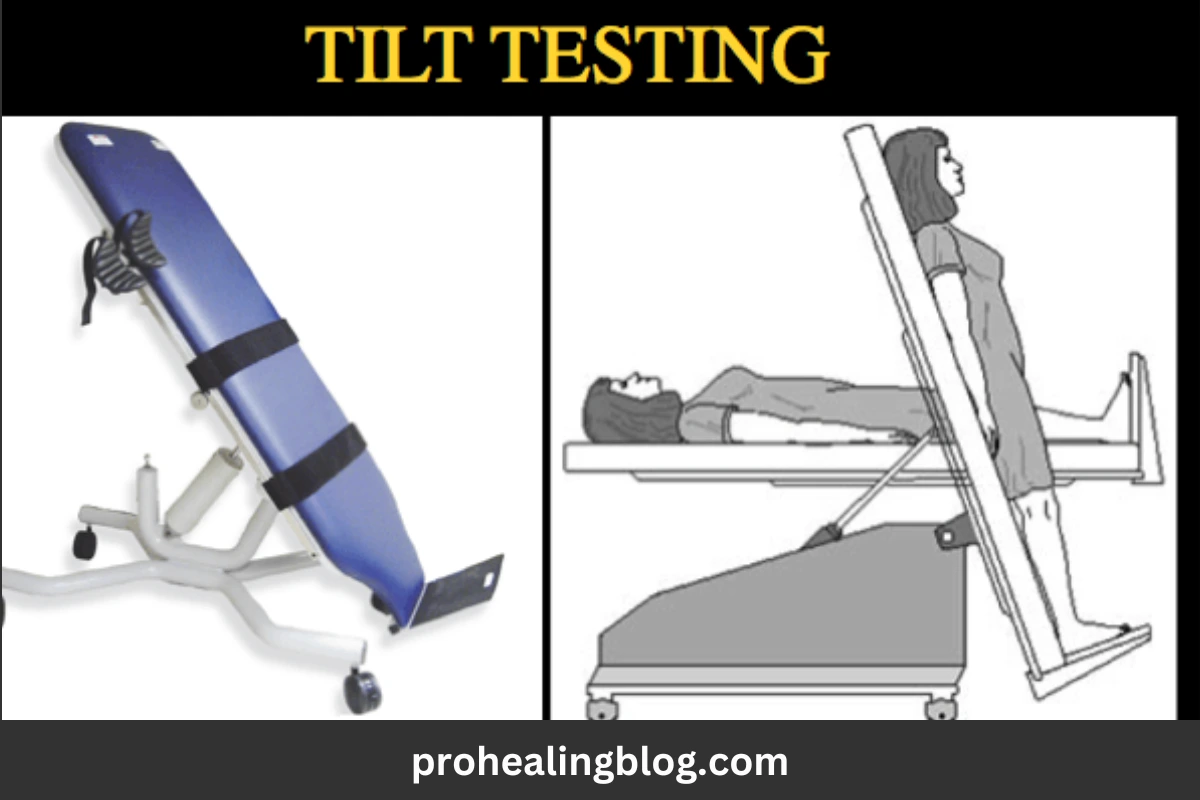The tilt table test TTT is a diagnostic tool used to identify the causes of fainting, dizziness, and other symptoms related to blood pressure and heart rate changes. Doctors often recommend it for conditions like postural orthostatic tachycardia syndrome (POTS). This test provides crucial insights into how your body reacts to positional changes.
What Is a Tilt Table Test?
It examines how your body responds to a change in posture, particularly from lying down to standing up. During the test, you lie on a special table that tilts upward gradually. Medical professionals monitor your heart rate, blood pressure, and symptoms to assess your body’s response.
Tilt Table Test: Purpose and Uses
Doctors use the test to diagnose:
- Fainting Spells (Syncope): The test helps uncover why someone might faint suddenly.
- Postural Orthostatic Tachycardia Syndrome (POTS): POTS affects blood circulation and heart rate when standing.
- Orthostatic Hypotension: This condition involves a significant drop in blood pressure when standing.
- Autonomic Nervous System Disorders: It evaluates how your autonomic nervous system regulates blood flow and heart rate.
See also: Healing Herbs and Medicinal Plants List: Nature’s Remedies
Tilt Table Test Procedure
Here’s what happens during the test:
- Preparation:
- You’ll lie on a special motorized table.
- Electrodes are attached to your chest to monitor your heart.
- A blood pressure cuff is placed on your arm.
- Baseline Measurements:
- The medical team records your resting blood pressure and heart rate while lying flat.
- Tilting Phase:
- The table tilts gradually, raising you to an angle between 60° and 80°.
- You remain in this position for 20–45 minutes while being closely observed.
- Monitoring:
- Doctors monitor changes in your heart rate and blood pressure.
- If symptoms like dizziness, nausea, or fainting occur, the test may stop early.
- Medication (Optional):
- In some cases, doctors administer medication to provoke symptoms for more accurate diagnosis.
What Is a Positive Tilt Table Test?
A positive TTT occurs when:
- Heart Rate Spikes: Your heart rate increases abnormally, often indicating POTS.
- Blood Pressure Drops: A sudden drop in blood pressure may point to orthostatic hypotension.
- Symptoms Appear: Symptoms like fainting, dizziness, or nausea occur during tilting.
A positive result helps doctors pinpoint the underlying issue and plan appropriate treatments.
Tilt Table Test and POTS
The test is a key diagnostic tool for Postural Orthostatic Tachycardia Syndrome (POTS).
- POTS is a condition where the heart rate increases by 30 beats per minute (or more) within 10 minutes of standing.
- Symptoms include dizziness, fatigue, and even fainting.
- A positive test for POTS shows a significant increase in heart rate without a corresponding drop in blood pressure.
This information helps doctors diagnose POTS and differentiate it from other conditions.
See also: Marjoram Health Benefits: Uses in Medicine & Homeopathy
What Does a Positive Tilt Table Test Mean?
A positive result can indicate:
- POTS: An abnormal heart rate increase when standing.
- Orthostatic Hypotension: A sharp drop in blood pressure upon standing.
- Neurocardiogenic Syncope: Fainting caused by a sudden drop in heart rate and blood pressure.
- Autonomic Dysfunction: Irregularities in how the nervous system controls heart rate and blood pressure.
What to Do After a Positive Tilt Table Test?
If your test is positive:
- Follow-Up Tests:
- Doctors may recommend additional tests like blood work, ECG, or echocardiograms.
- Lifestyle Adjustments:
- Increase salt and fluid intake if recommended.
- Avoid sudden positional changes.
- Medication:
- Medications like beta-blockers or fludrocortisone may help manage symptoms.
- Physical Therapy:
- Specific exercises can improve circulation and reduce symptoms.
- Regular Monitoring:
- Routine follow-ups ensure effective management of the condition.
Head-Upright Tilt Table Test
The head-upright TTT is another term for the tilt table test. It focuses on how your body manages blood flow and heart rate while transitioning from lying to standing. This test helps diagnose fainting episodes and autonomic disorders.
Tilt Table Testing: Is It Safe?
TTT is generally safe. However, some people may experience temporary side effects, including:
- Dizziness or nausea during the test.
- Fainting (if triggered).
- Mild discomfort from lying in one position for a prolonged period.
Trained professionals monitor you throughout to ensure your safety.
Tilt Table Test Success Rate
The test has a high success rate in diagnosing conditions like POTS and orthostatic hypotension. However, its accuracy depends on the patient’s symptoms and the test protocol. Discussing the results with your doctor is crucial for proper diagnosis and treatment.
Tilt Table Test: Preparing for It
To prepare for the test:
- Avoid caffeine, alcohol, and heavy meals 12 hours before the test.
- Wear loose, comfortable clothing.
- Inform your doctor about any medications you’re taking.
- Bring someone to accompany you, as you may feel lightheaded afterward.
TTT PDF and Template
Many hospitals and clinics provide a TTT PDF that explains the procedure, preparation, and post-test care. You can also find templates outlining how the test is performed to help you understand the process better.
Conclusion
The TTT is a crucial diagnostic tool for understanding fainting, dizziness, and other circulatory issues. Whether you’re being tested for POTS or another condition, the test provides vital insights. It’s a safe, effective, and non-invasive way to guide treatment and improve quality of life.
If you’re experiencing unexplained fainting or dizziness, consult your doctor about whether a TTT might help.
See also: Mood Gummies: Benefits, Uses, Safety, and How They Work
FAQs
1. What Is the Tilt Table Test?
It’s a medical test that examines how your body responds to positional changes, particularly standing up.
2. What Does a Positive Tilt Table Test Mean?
It indicates issues like POTS, orthostatic hypotension, or neurocardiogenic syncope.
3. What Is Tilt Table Testing Used For?
It’s used to diagnose fainting, dizziness, and autonomic disorders.
4. Is the Tilt Table Test Safe?
Yes, it’s safe and closely monitored by medical professionals.


